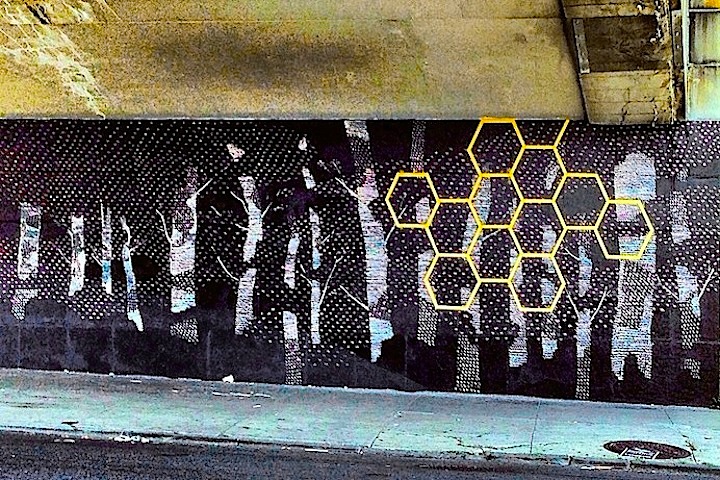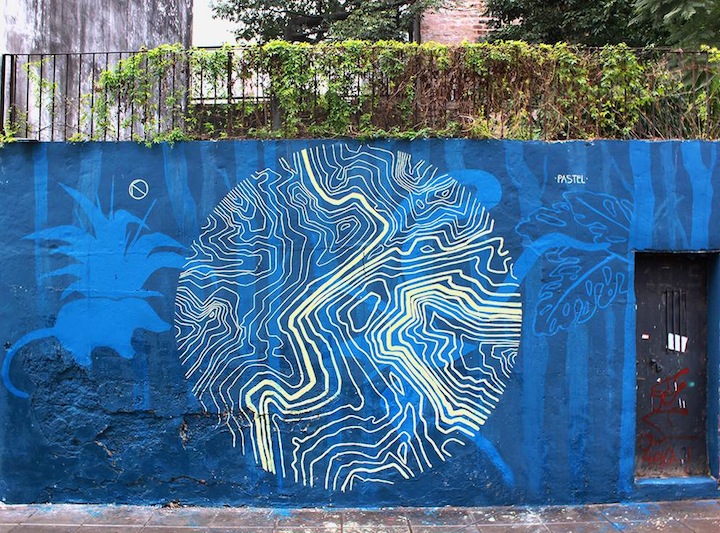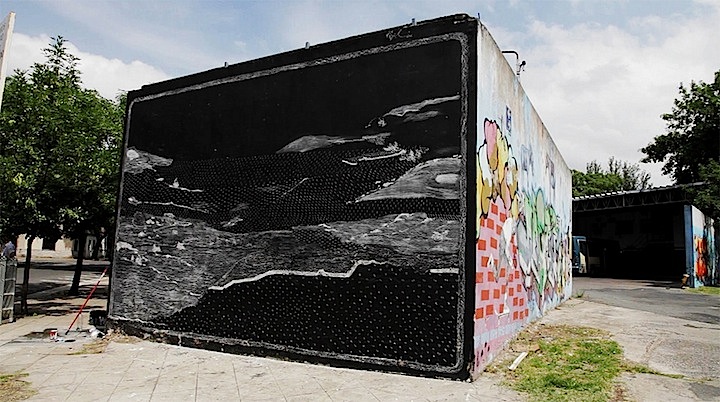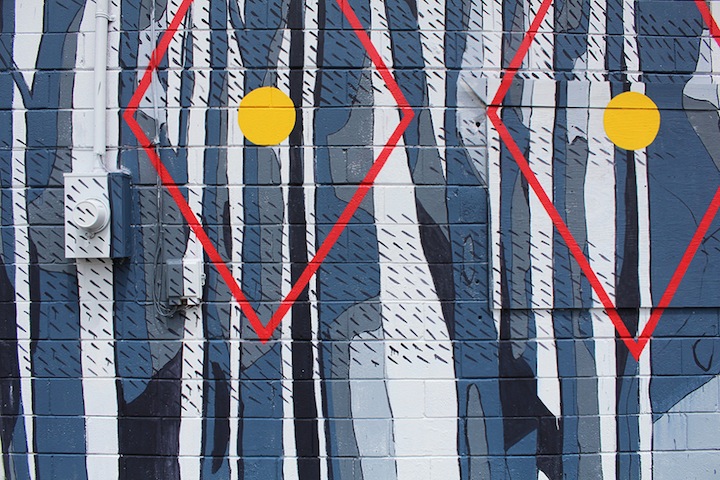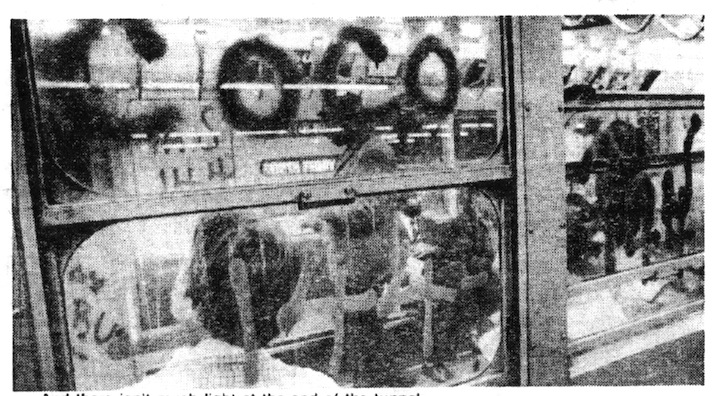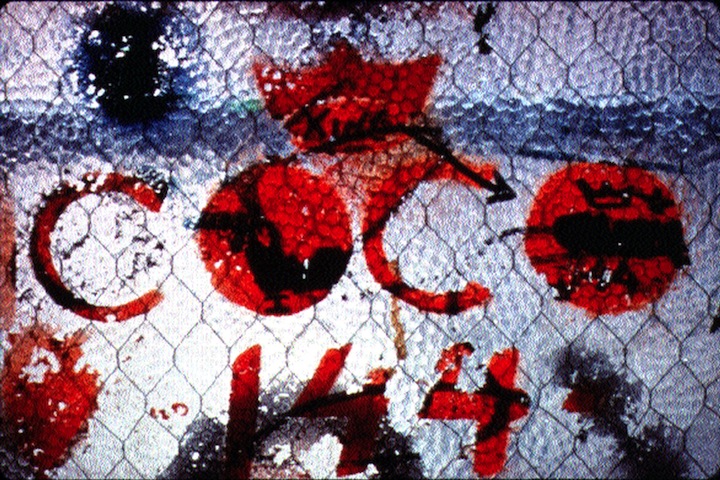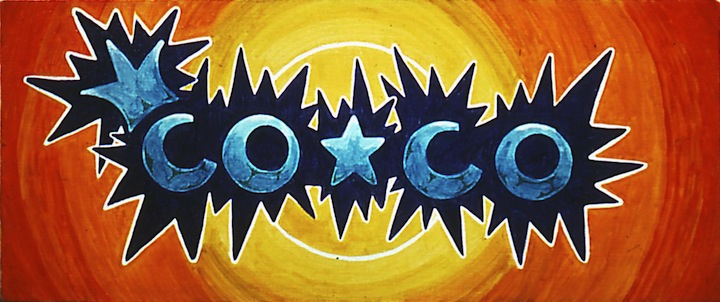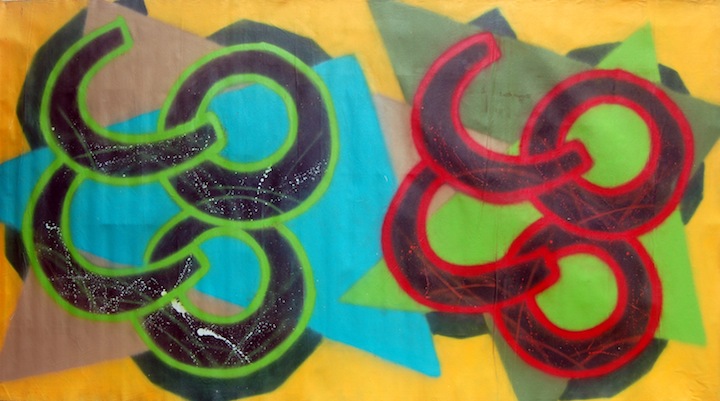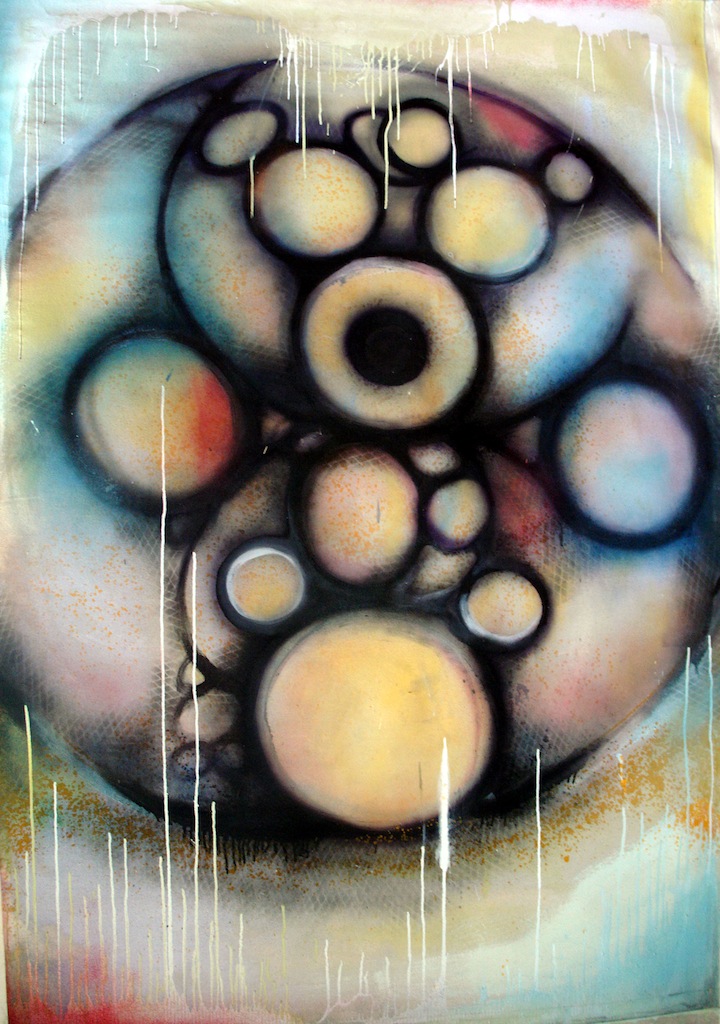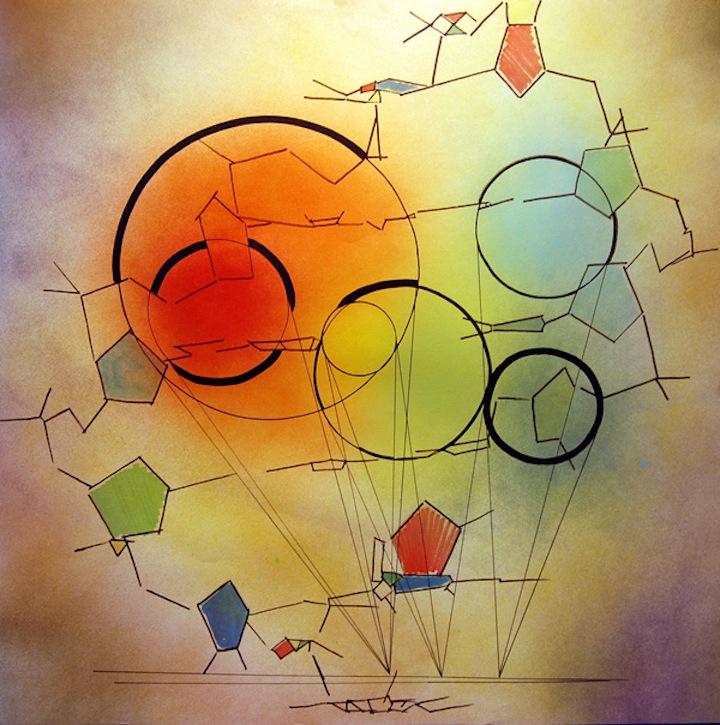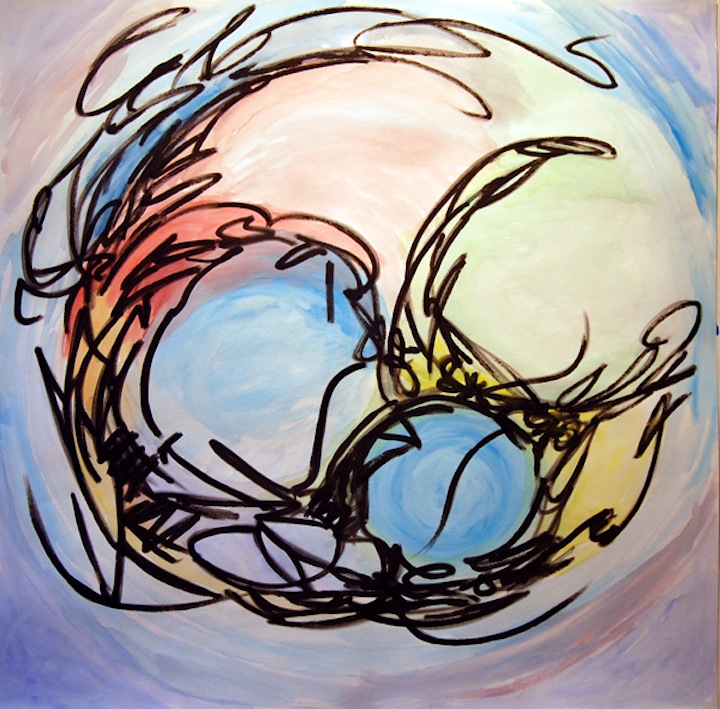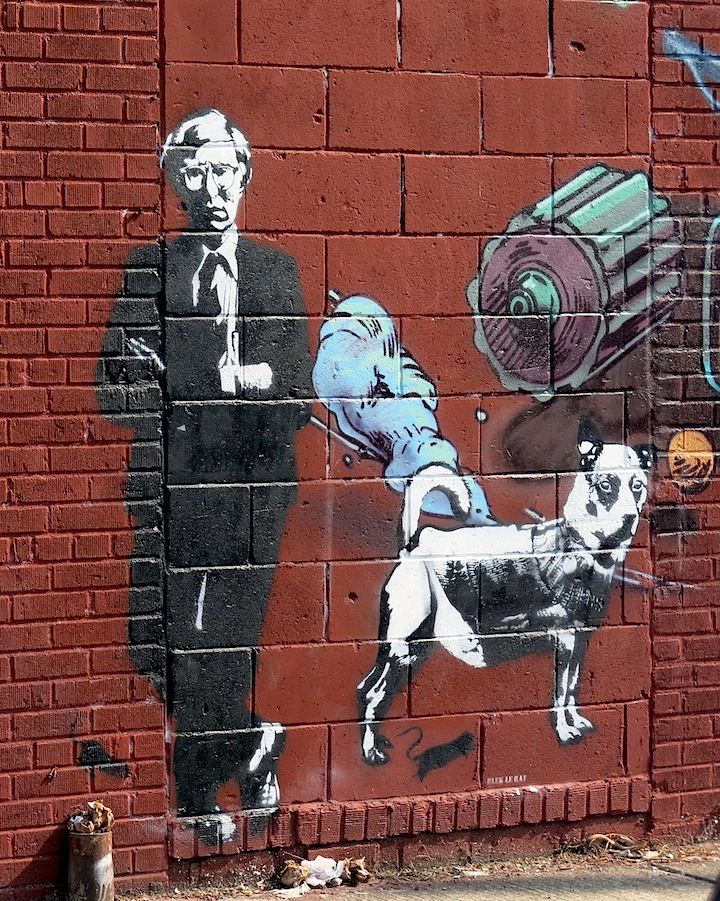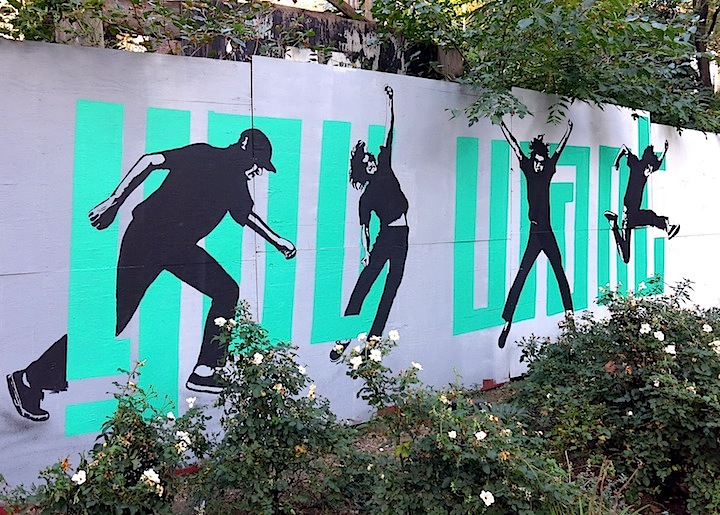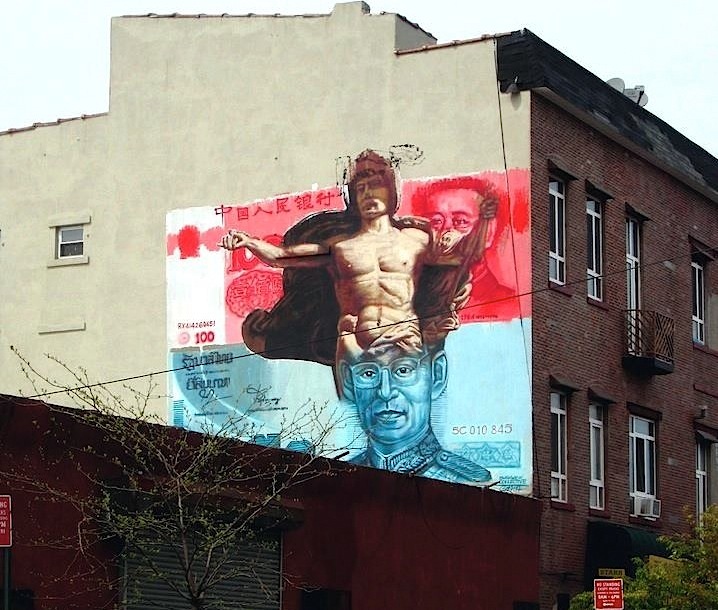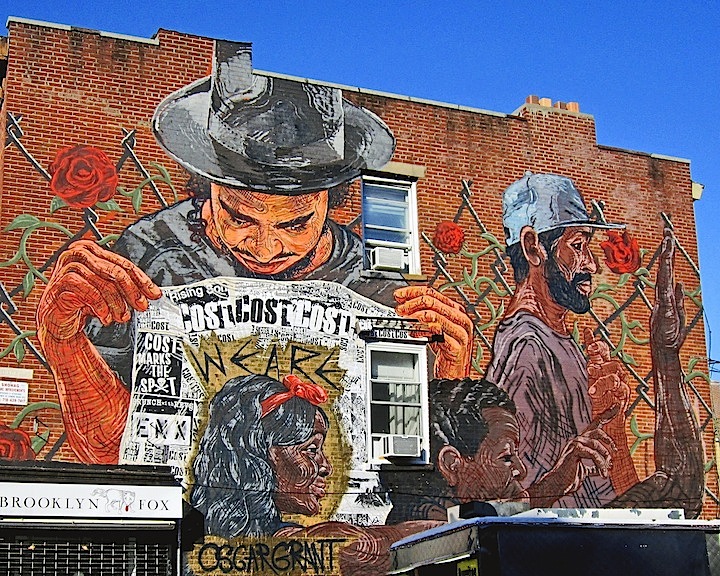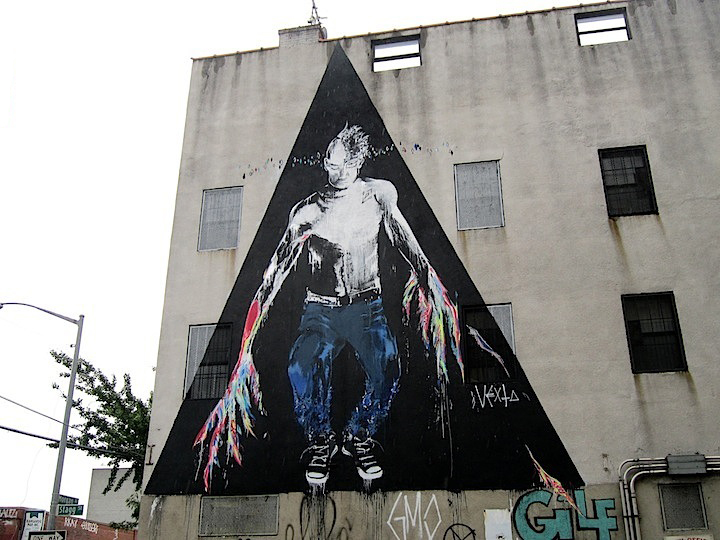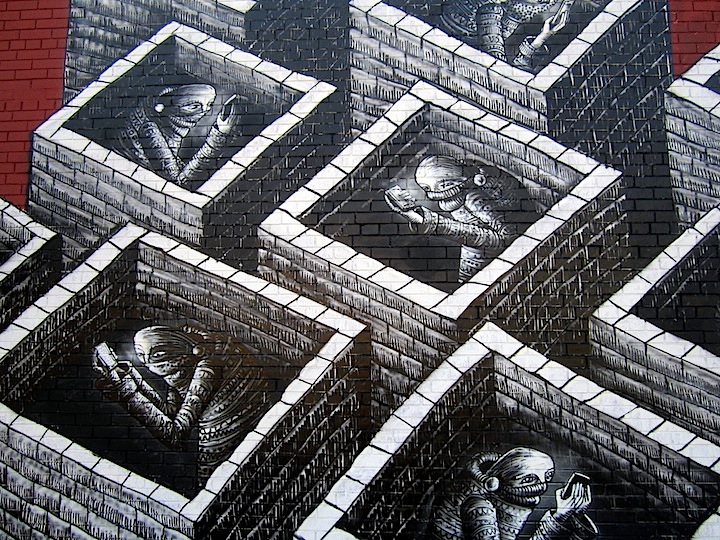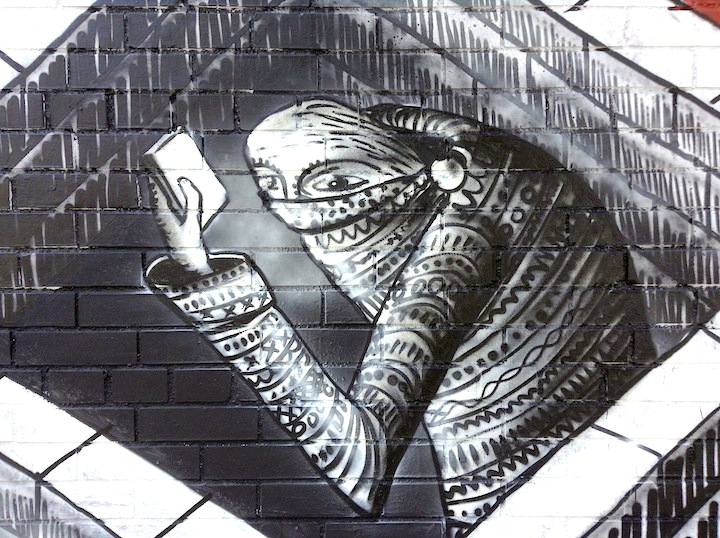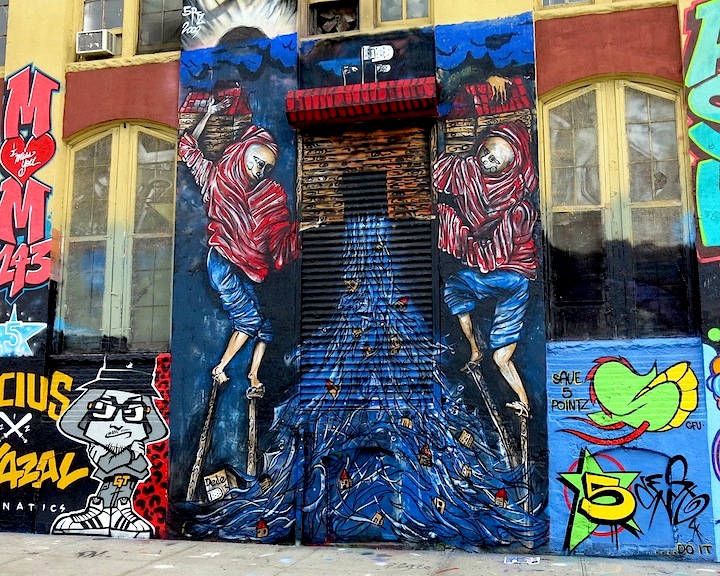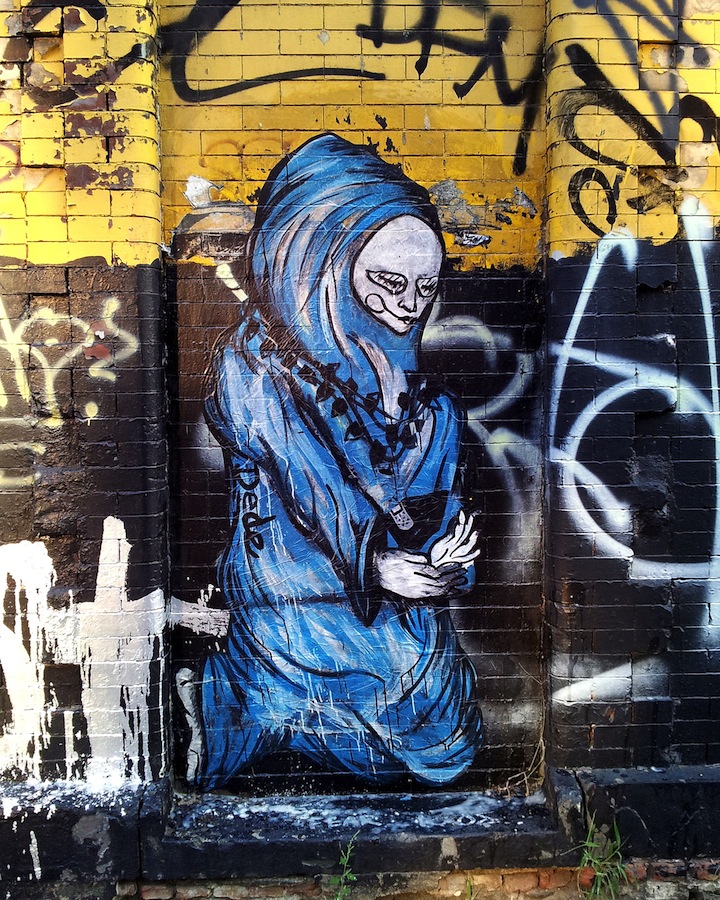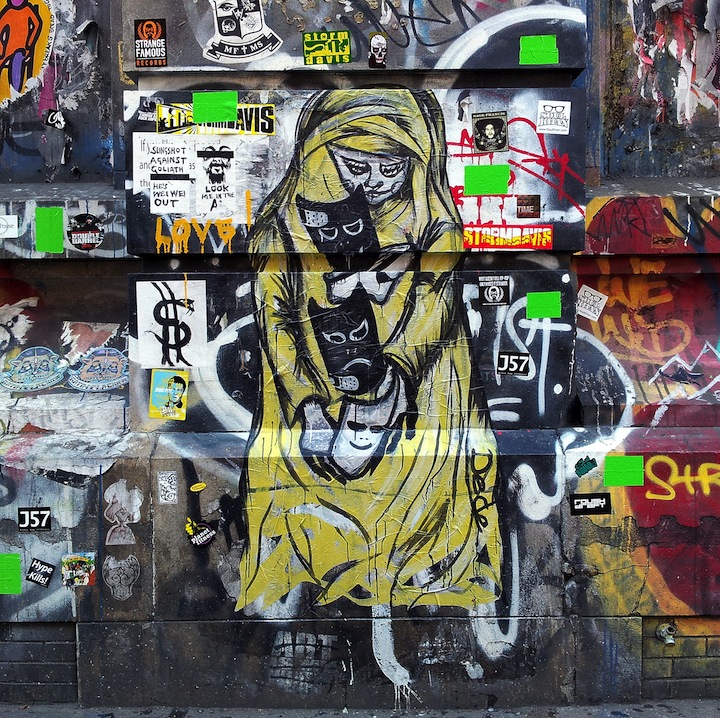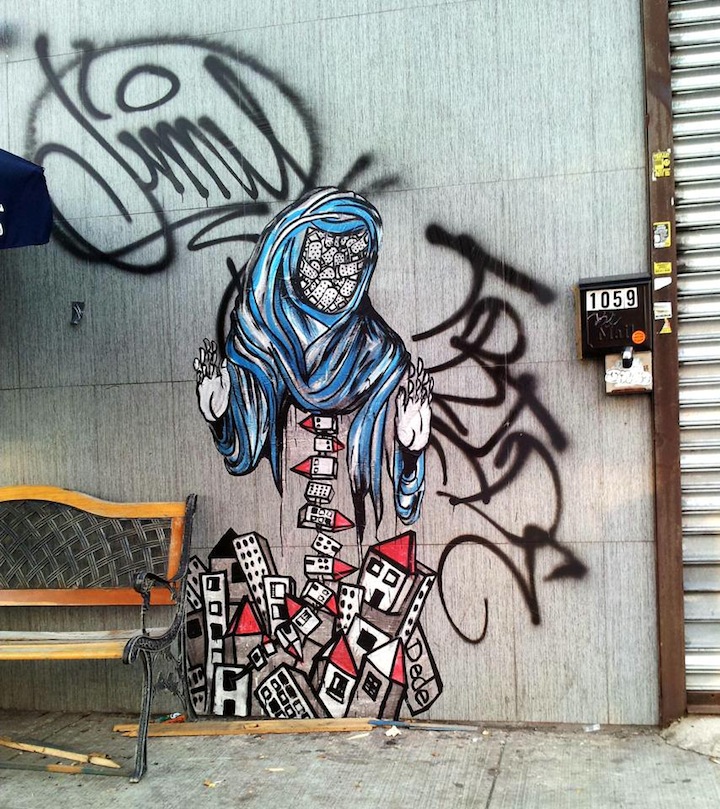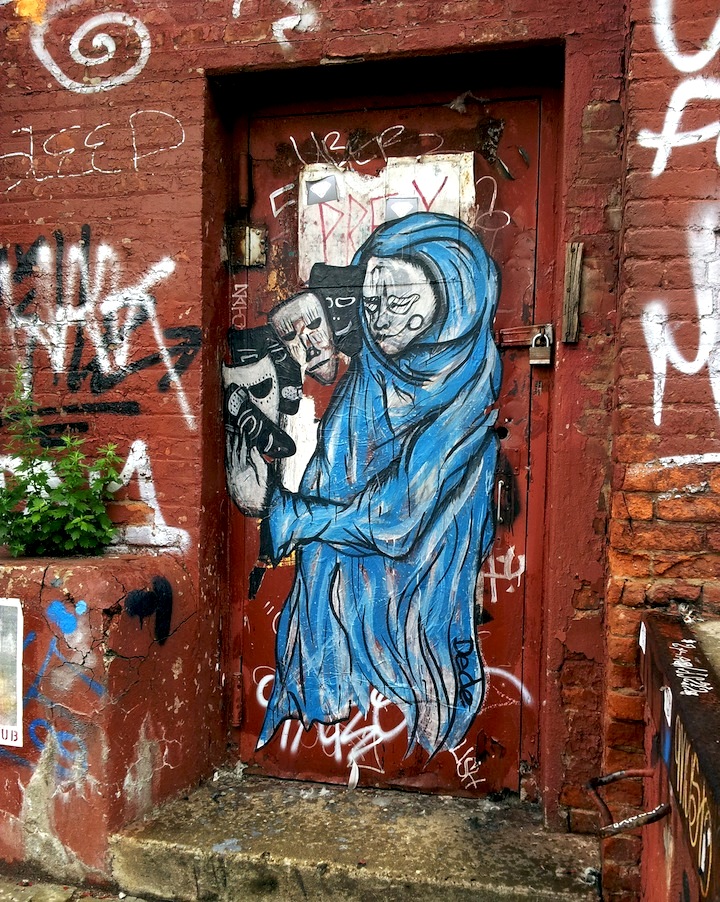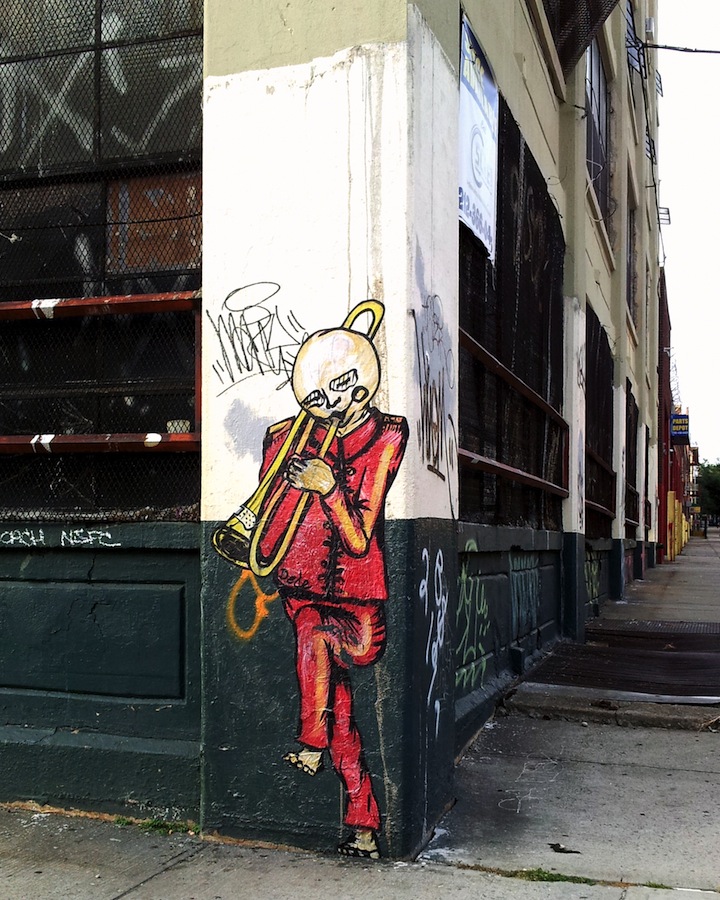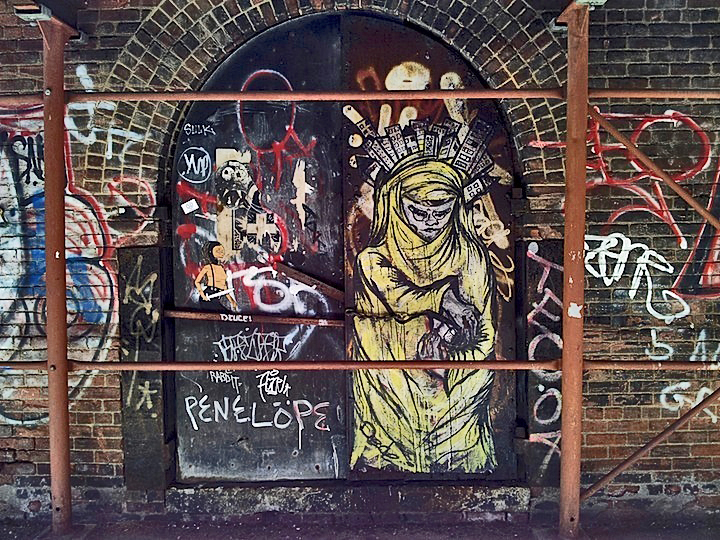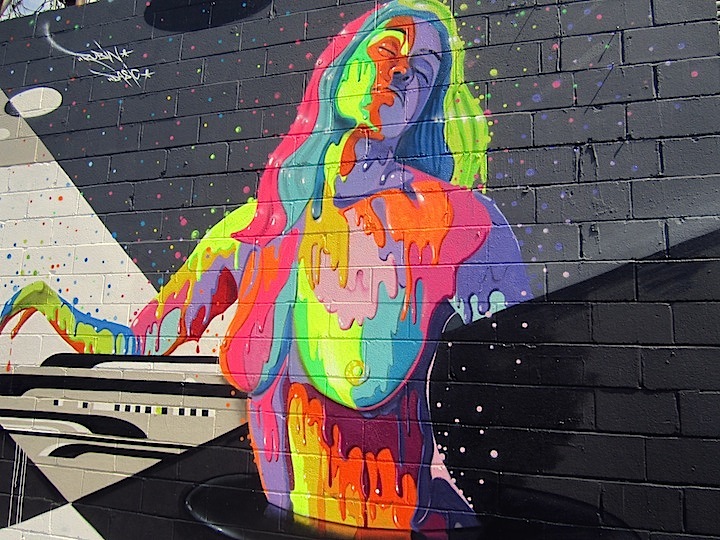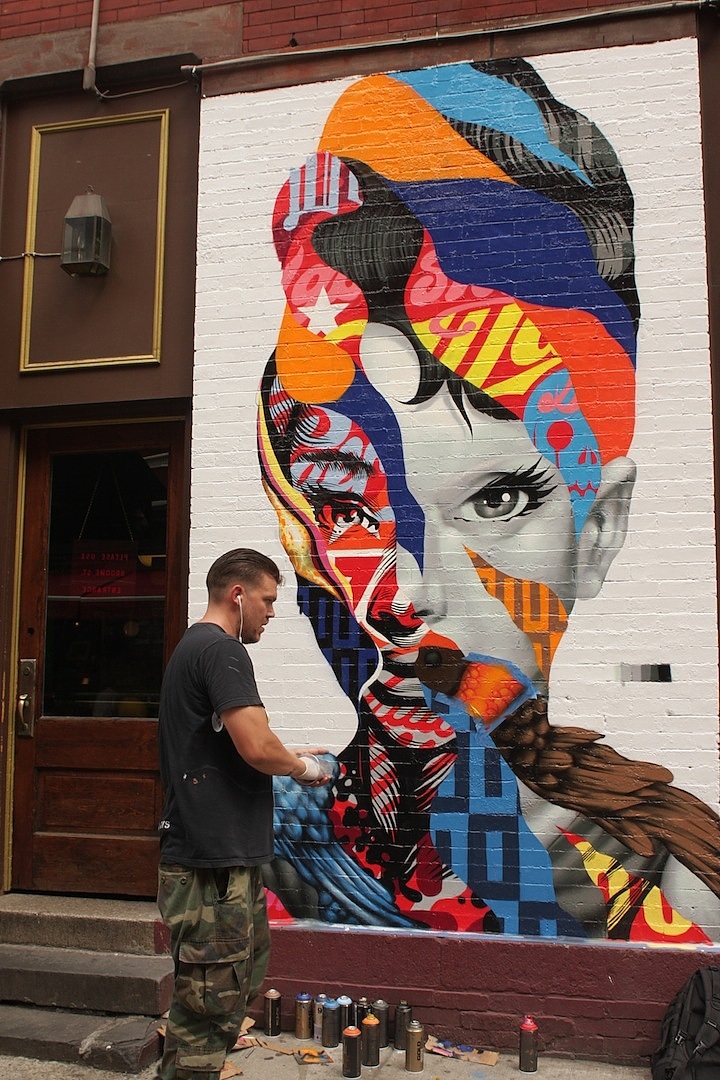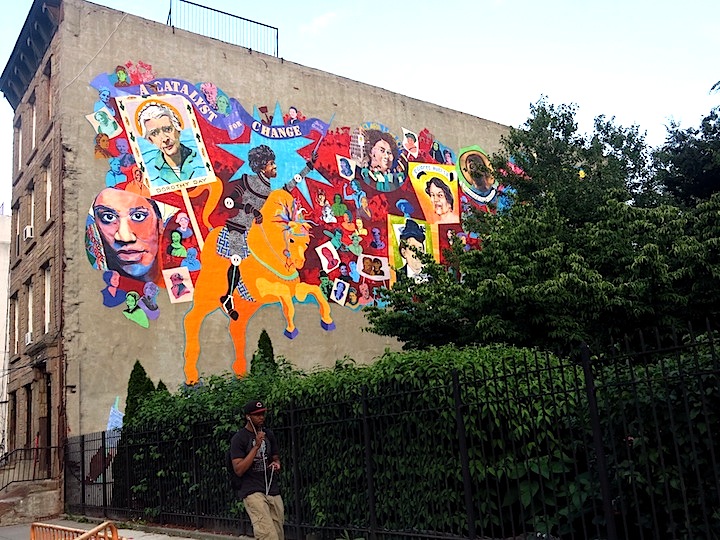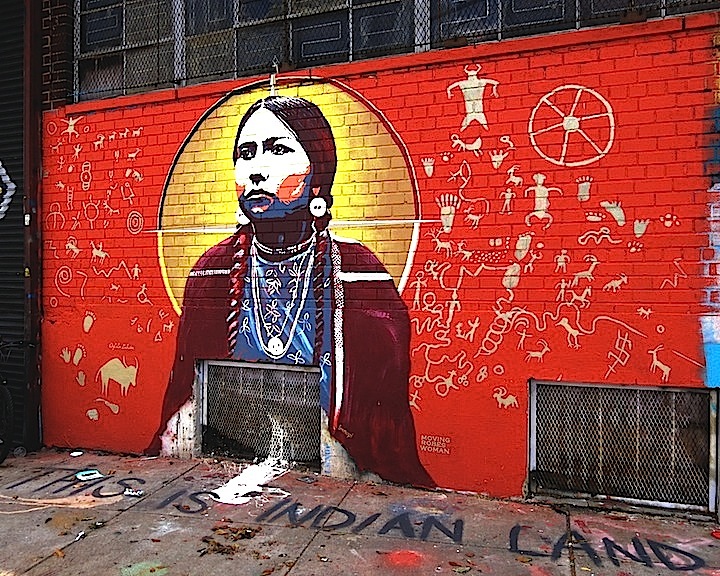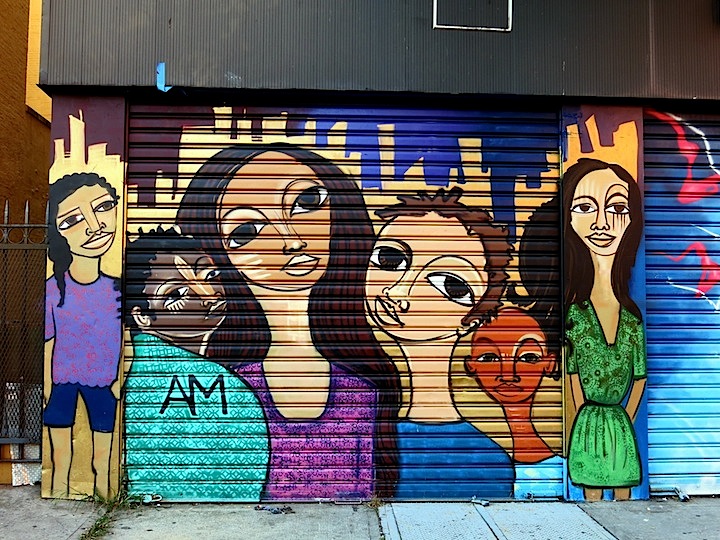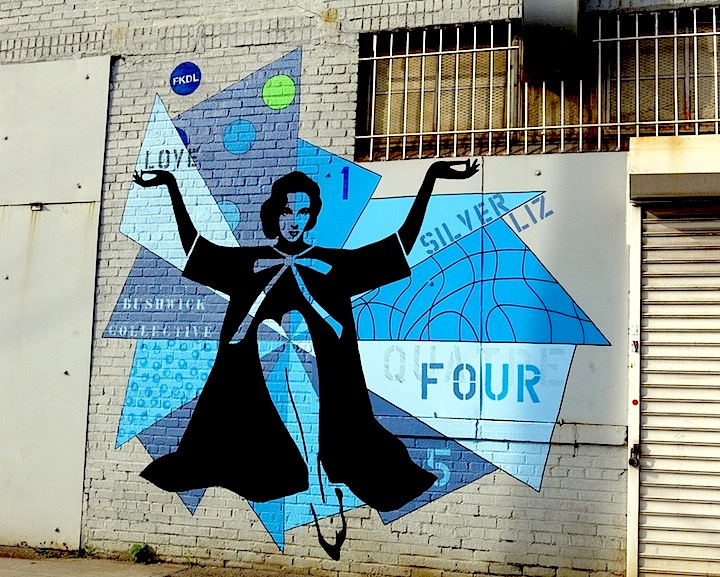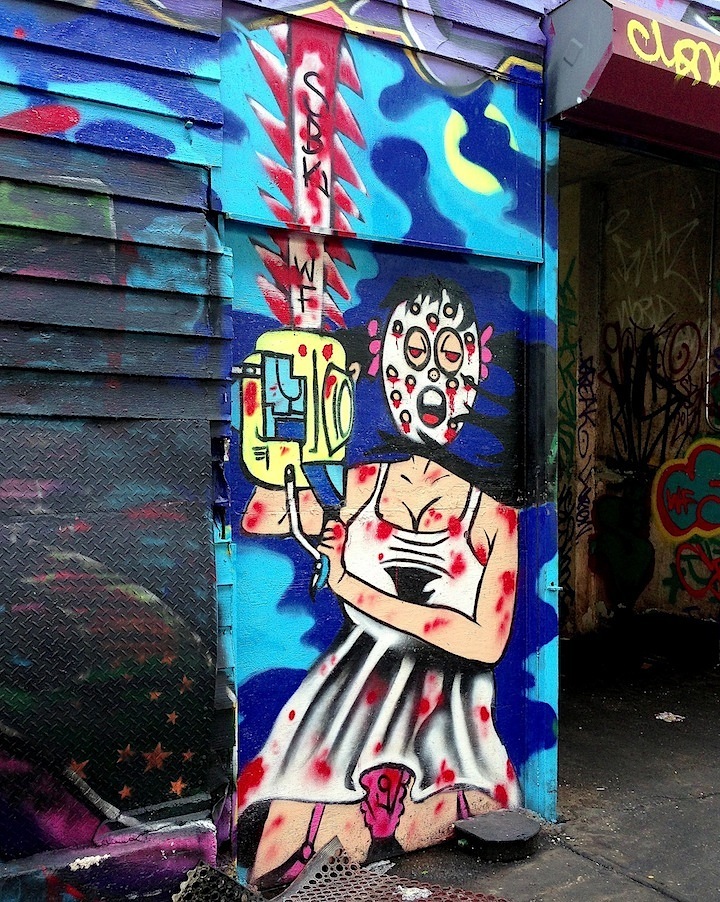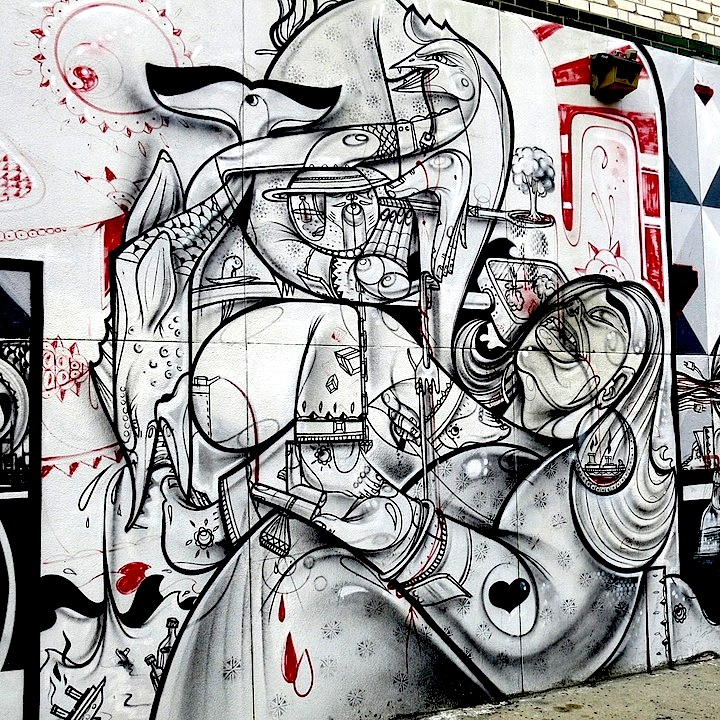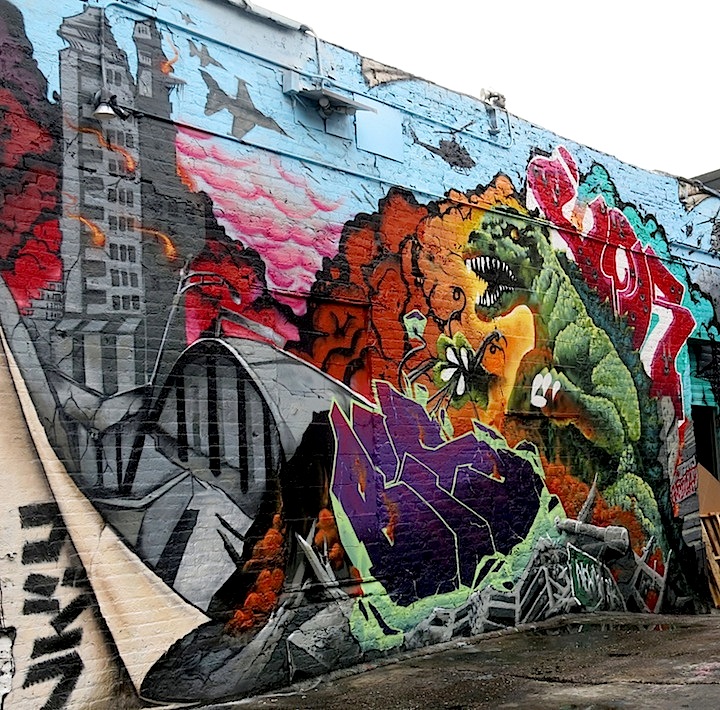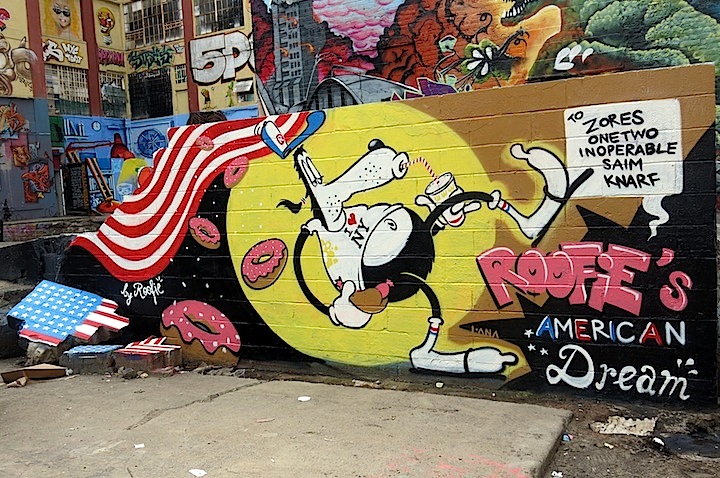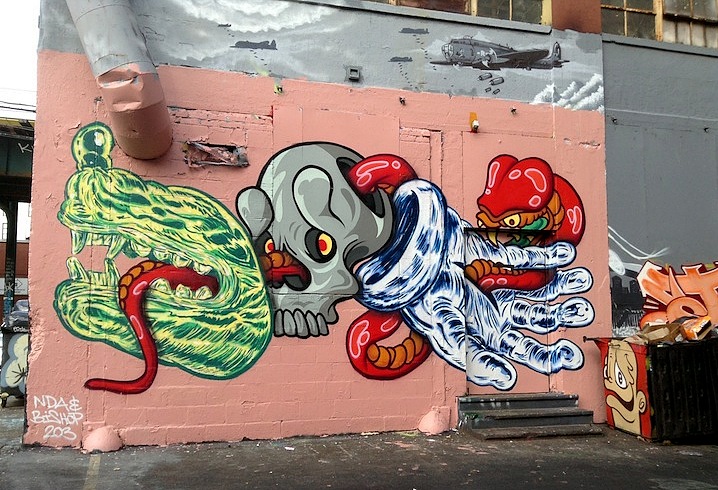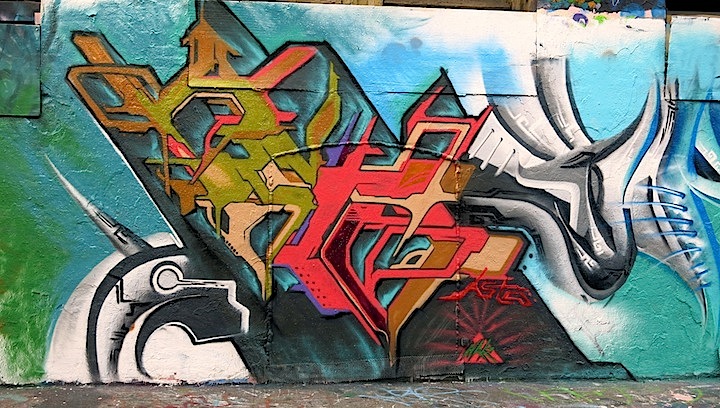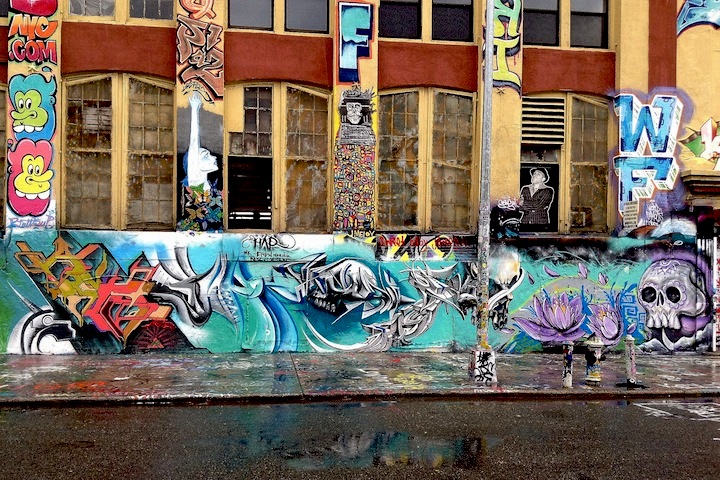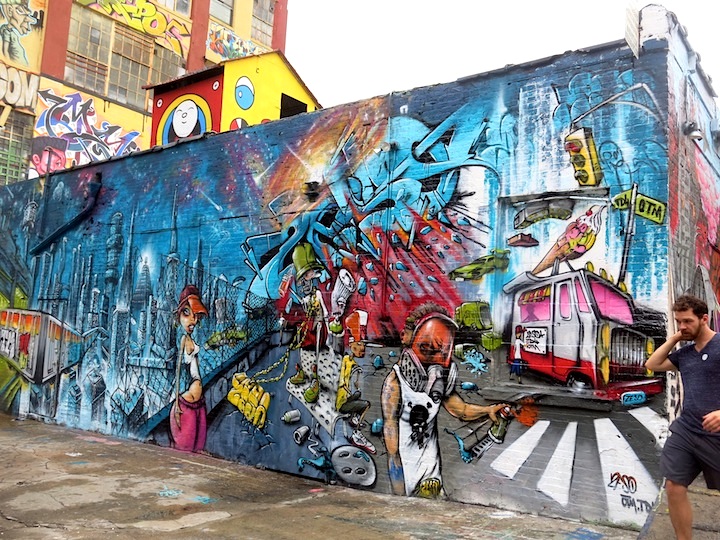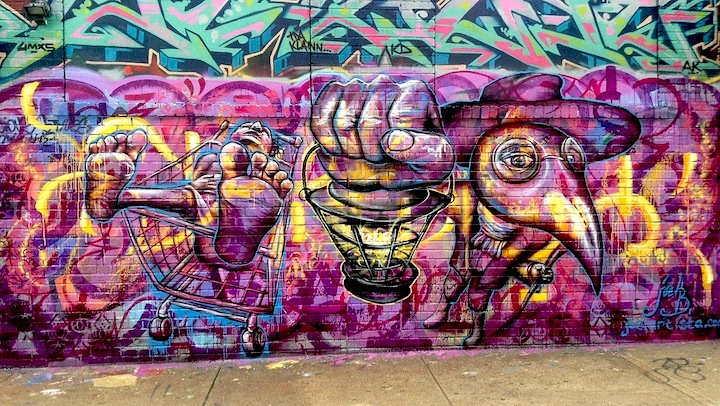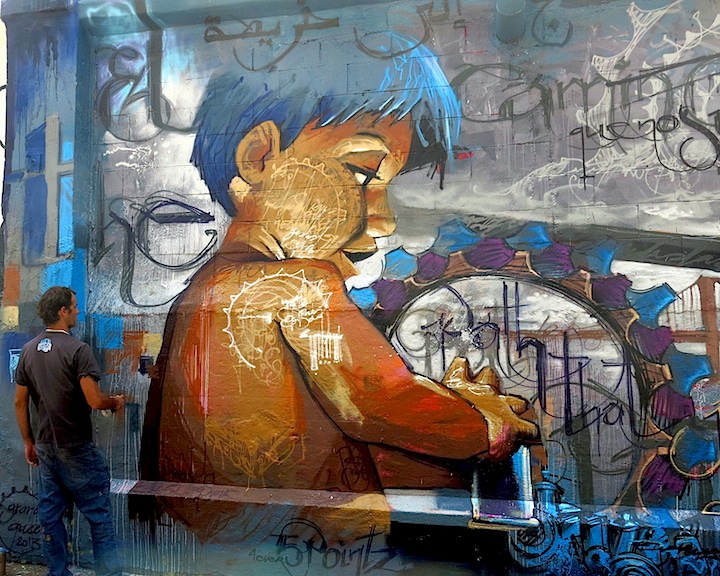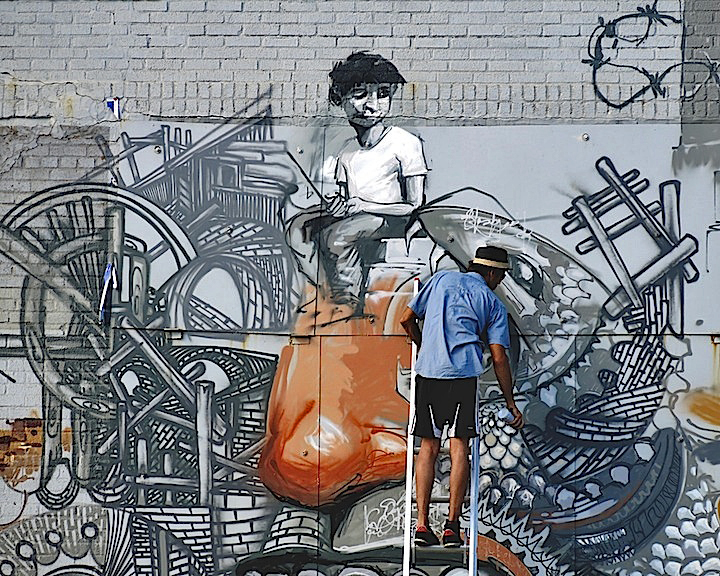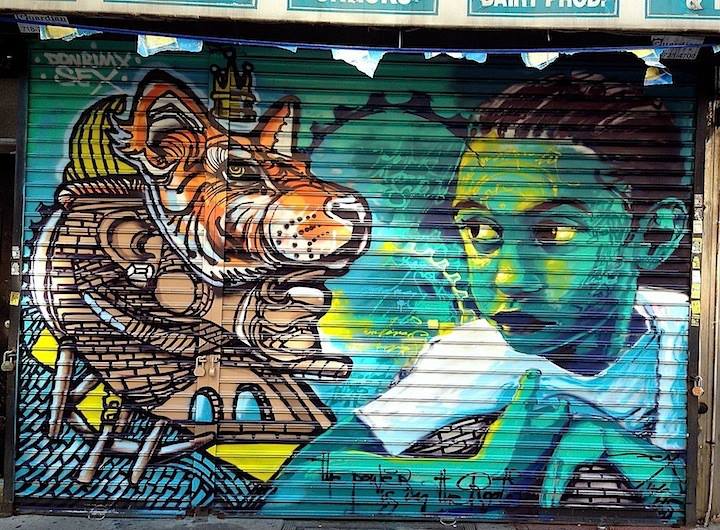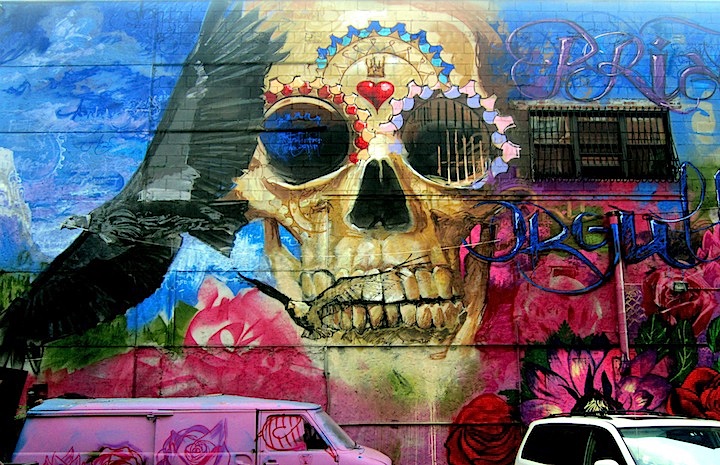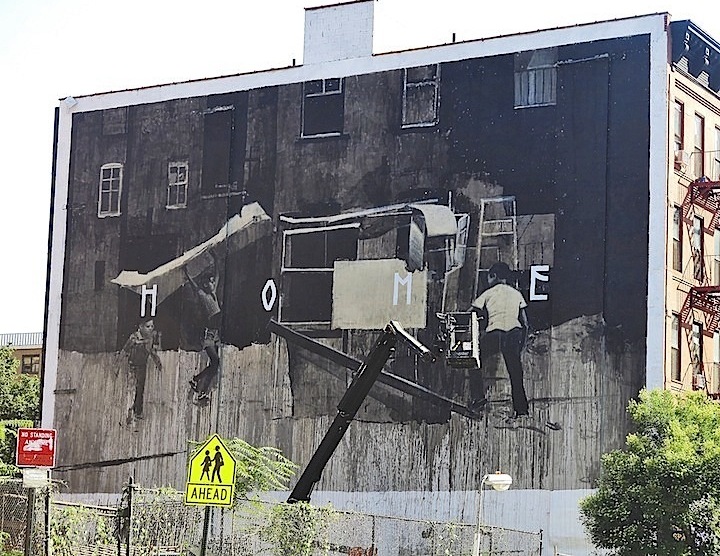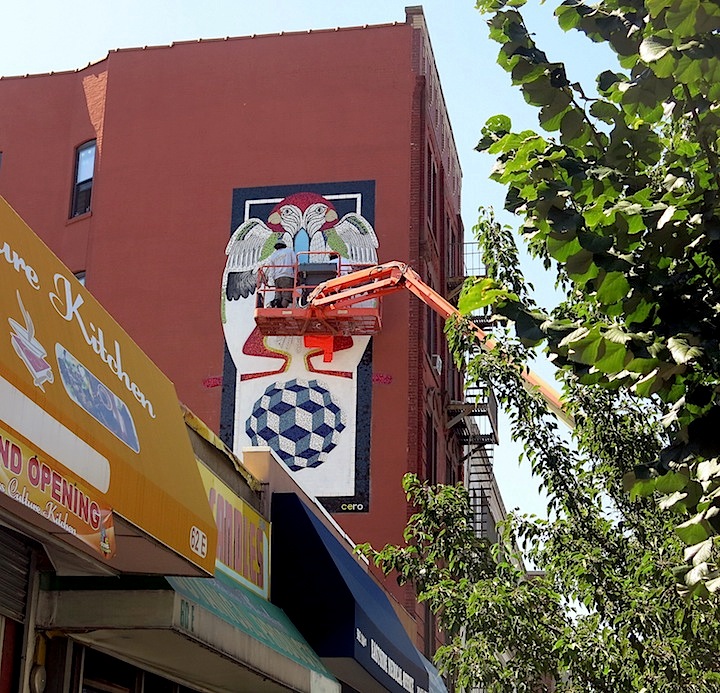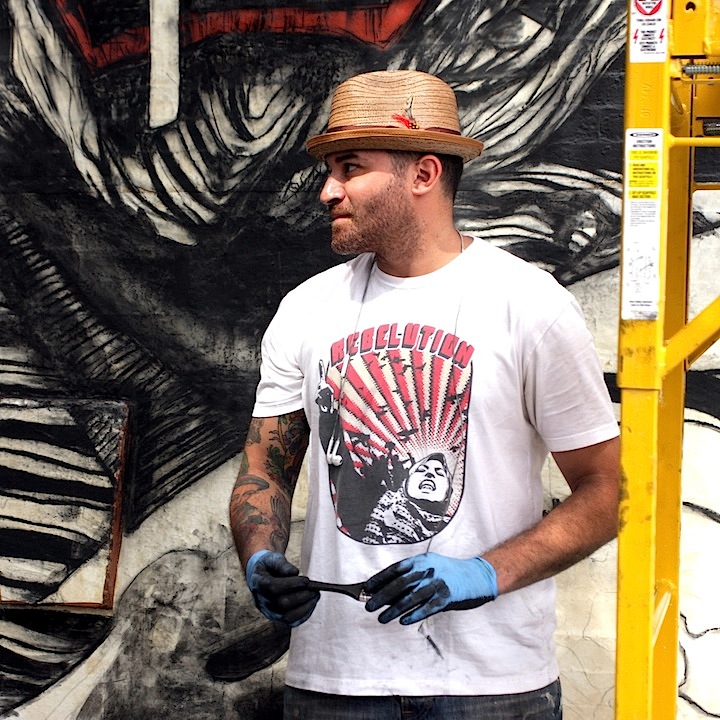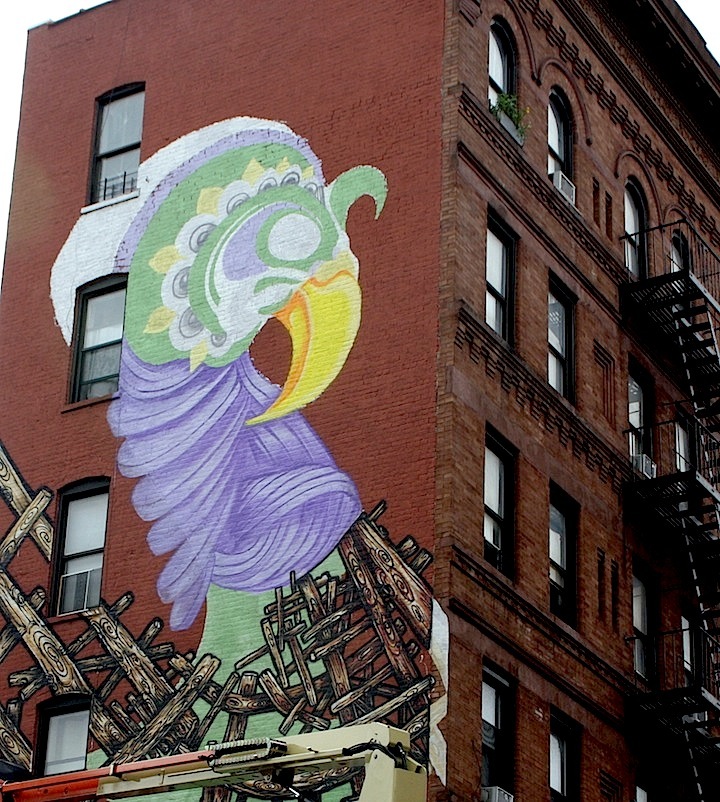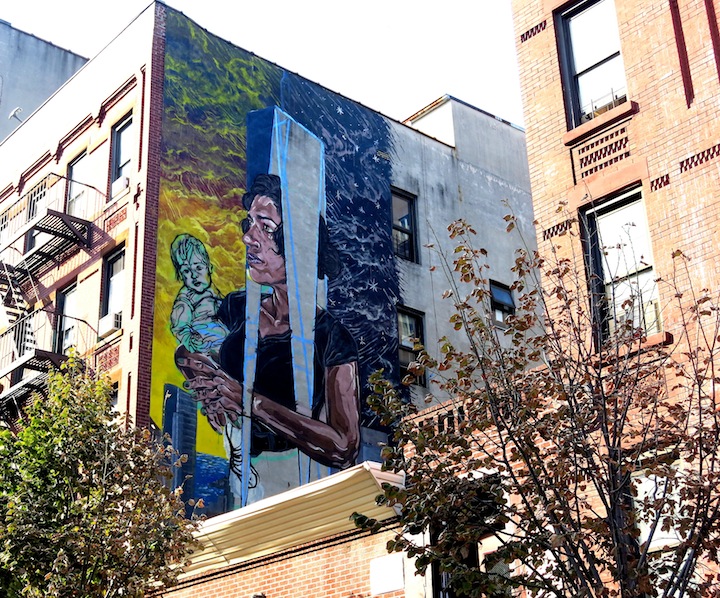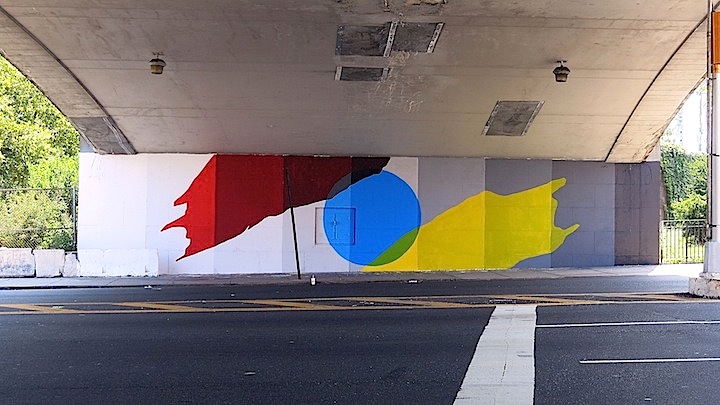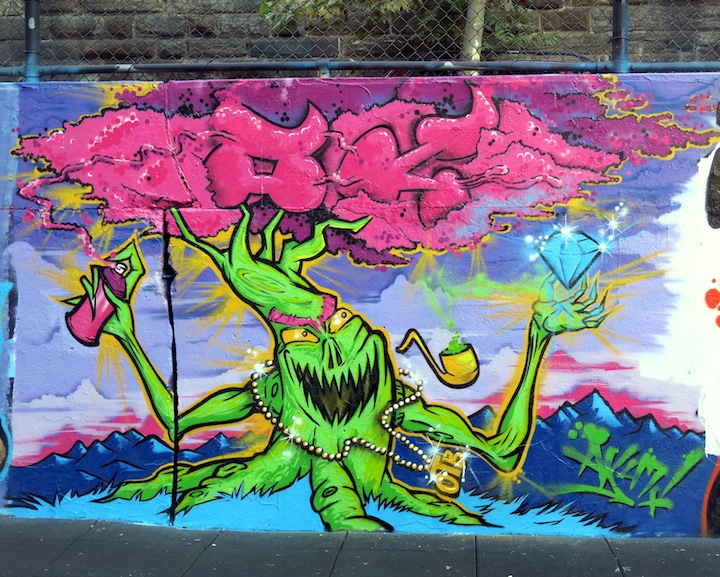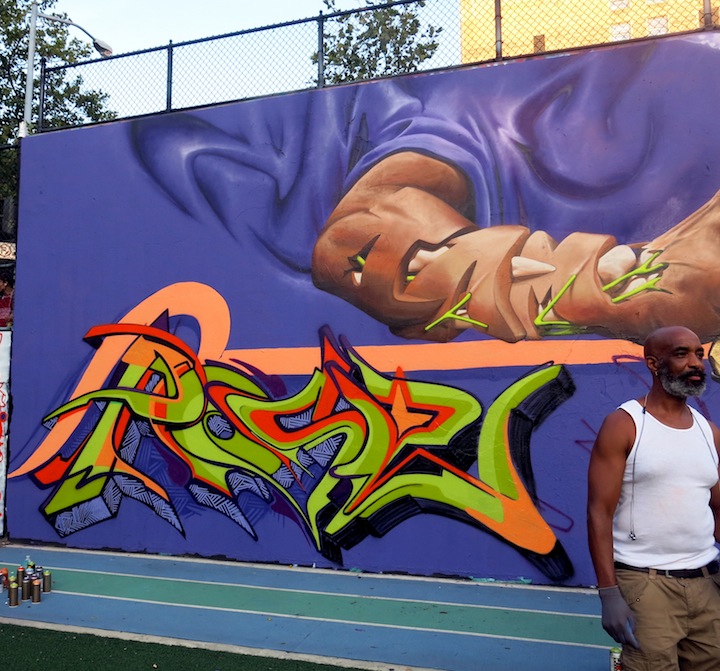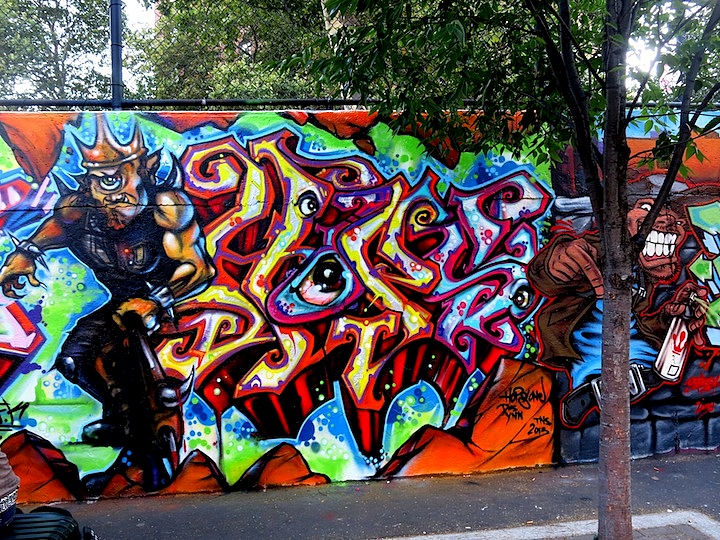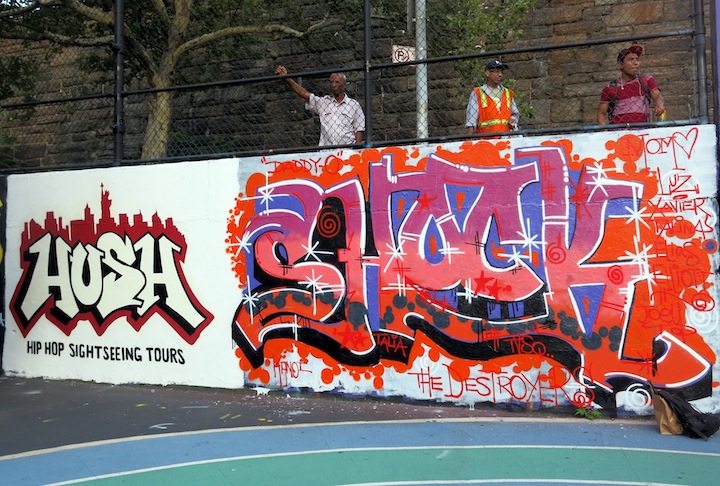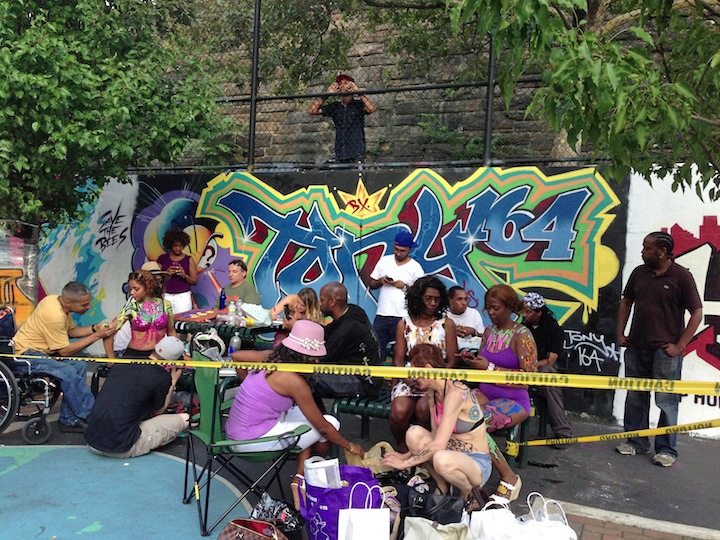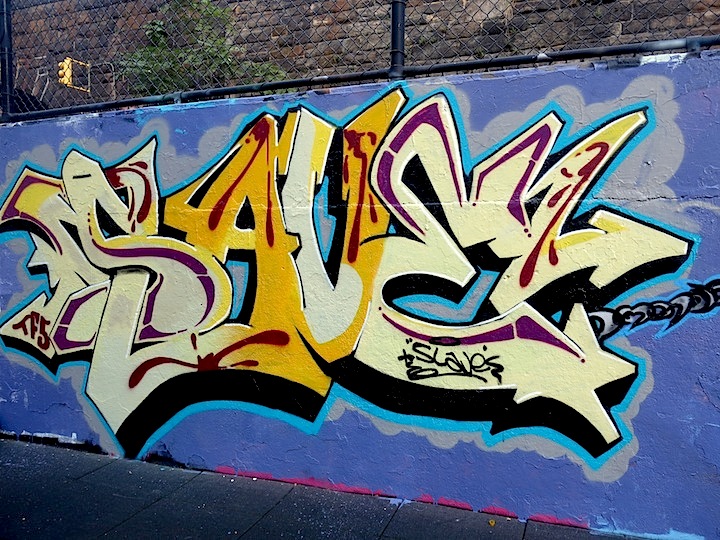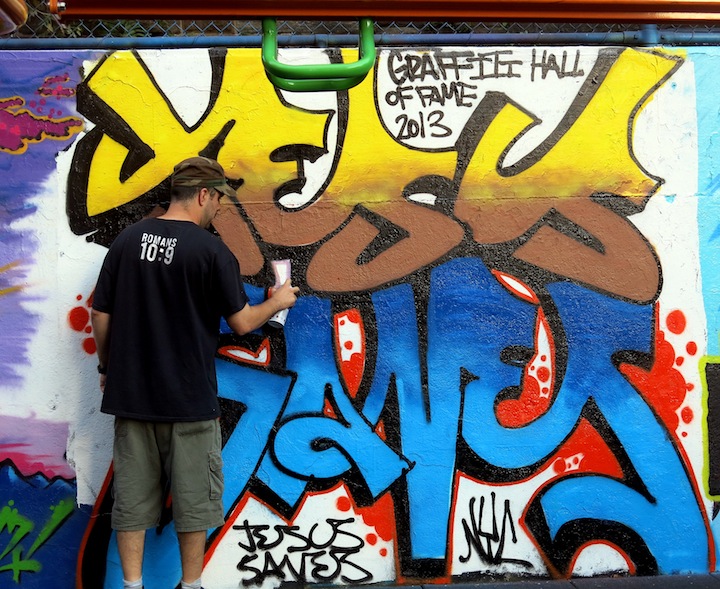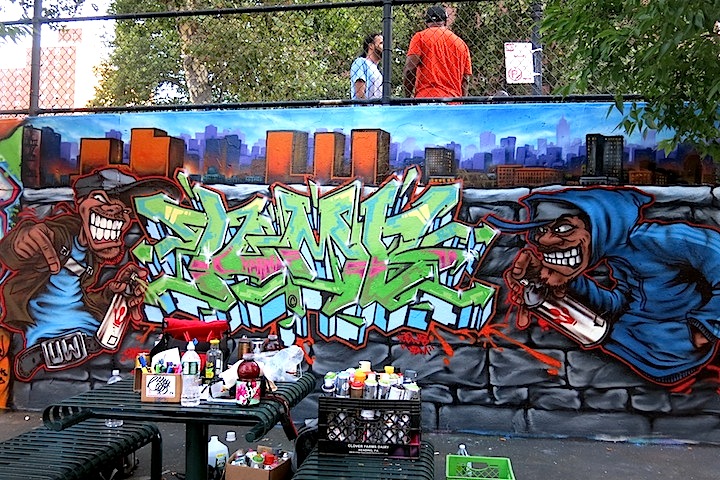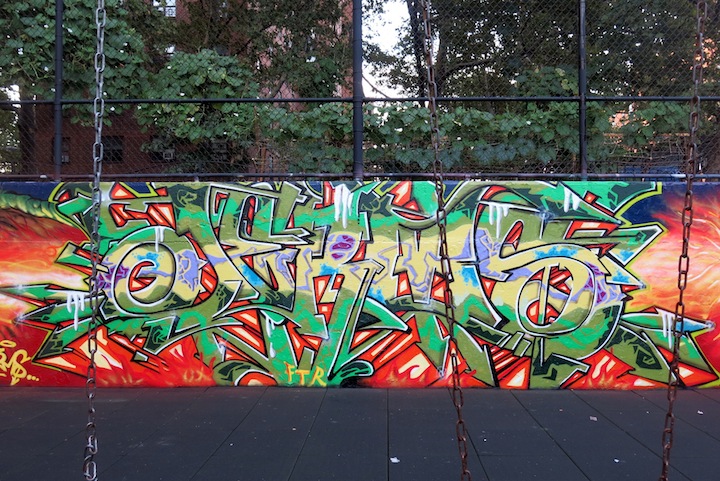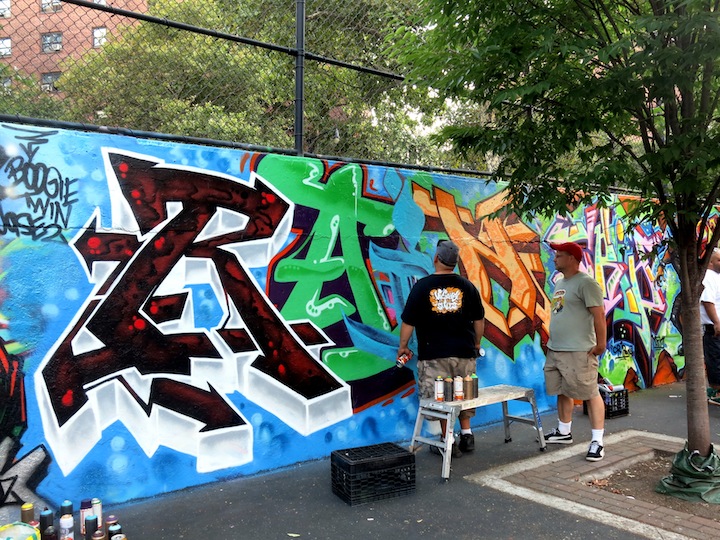Based in Argentina where he shares a studio with artists Jaz and Ever, Pastel recently participated in the urban arts festival, Los Muros Hablan, here in NYC. His splendid mural in the South Bronx is representative of his distinct aesthetic, which fuses his passions and talents for architecture, painting and muralism. I had the opportunity to speak to him briefly last month before he returned to his native Buenos Aires.
When did you first get up in a public space?
When I was 14 or 15, I began tagging in my Buenos Aires neighborhood with markers that I made from tampons and tar. But then when I broke my knee playing soccer and I could no longer dream of playing professionally, I began painting walls. That was in 2002.
Have you a formal art education?
I studied architecture at the University of Buenos Aires.
But you aren’t working primarily as an architect these days; are you?
No, I don’t like the structure of business, and I don’t see the need for more construction in cities. There are too many buildings already.
What percentage of your time is devoted to art?
Almost all of my time. About 20% is devoted to architecture, but I would like to devote 100% of it to my own art.
What is the riskiest thing you ever did?
Living my life as an artist. In Argentina, it’s way expensive and uncertain.
I suppose that’s the life of an artist anywhere! How does your family feel about what you’re doing now?
At the beginning they didn’t understand it; now they love it.
Do you prefer working alone or collaborating with others?
I like both, and they’re both different experiences. I especially love collaborating with Elian. We just look at each other, and we know! A real symbiosis. Our styles are different, but we can fuse them to create one image. Two paintings become one.
What is your ideal working environment?
I grew up in the city, and I love it, but I probably prefer being away from the city. Maybe in a tropical space.
Do you work with a sketch, or do you just let it flow?
I begin with a sketch and progress to a watercolor. I then paint on a canvas and finally on a wall. I try to use the wall as the final stage of a study.
Are you generally satisfied with your finished piece?
I try to be, but I’m never quite. There are always things to improve.
How has your work evolved through the years?
It’s changed radically. It’s far more conceptual these days with a philosophical mix. I need to have a concept behind the painting. I don’t paint just to paint. I need the work to tell something
How do you feel about the role of the Internet in all this?
It’s the new Jesus. You need to trust in somebody or something.
What about the photographers and bloggers?
I love them. They’re essential. We need them.
Is there much of a graffiti/street art divide in Buenos Aires?
They are two different worlds, but we all get along.
What’s ahead?
More painting, more new projects and loving more and more what I do.
Interview by Lois Stavsky; first photo of Pastel in the South Bronx by Lois Stavsky; following two photos of Pastel in Buenos Aires and final two of Pastel in Atlanta, Georgia, courtesy of the artist.
{ 2 comments }
